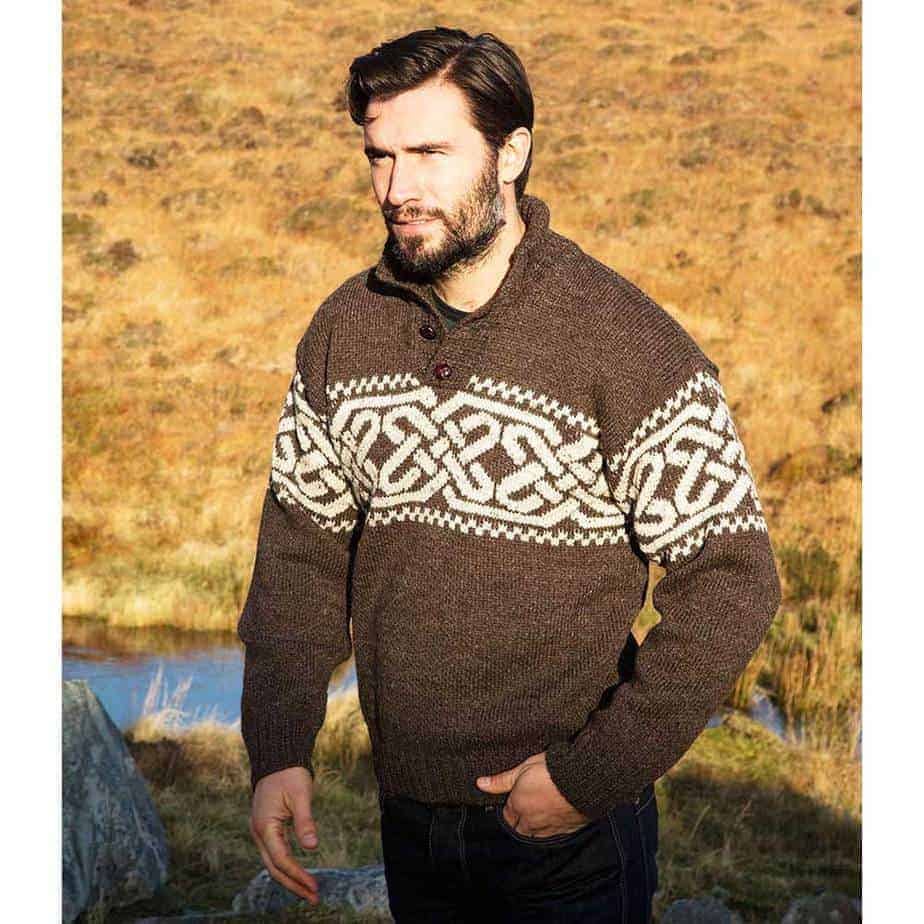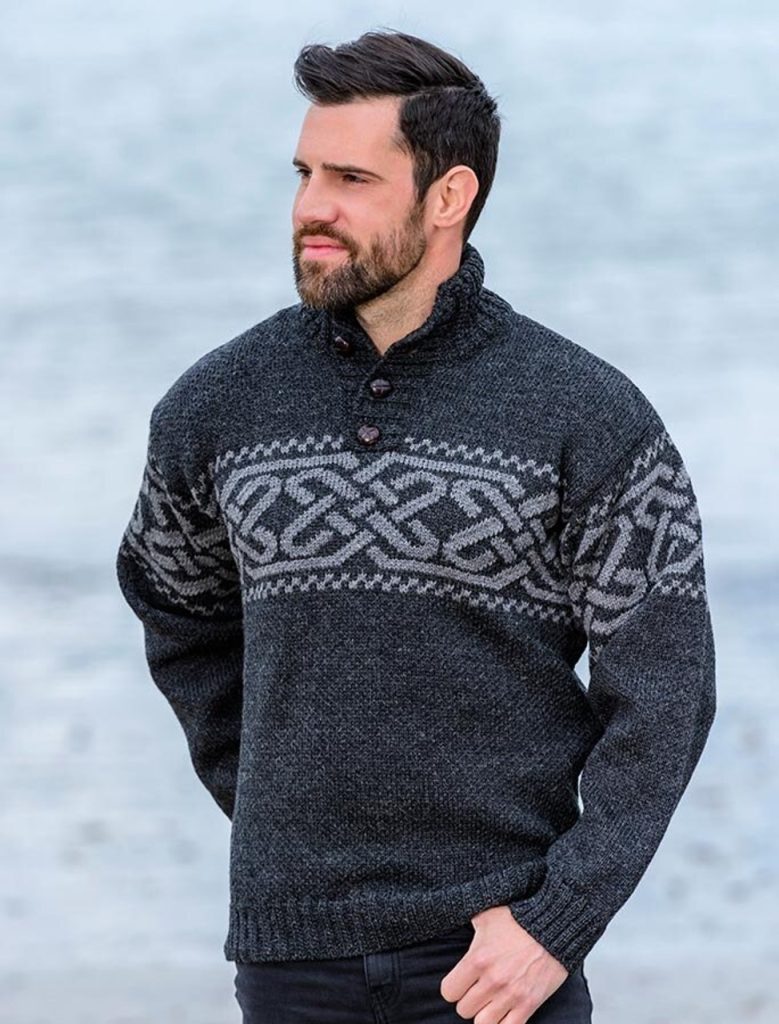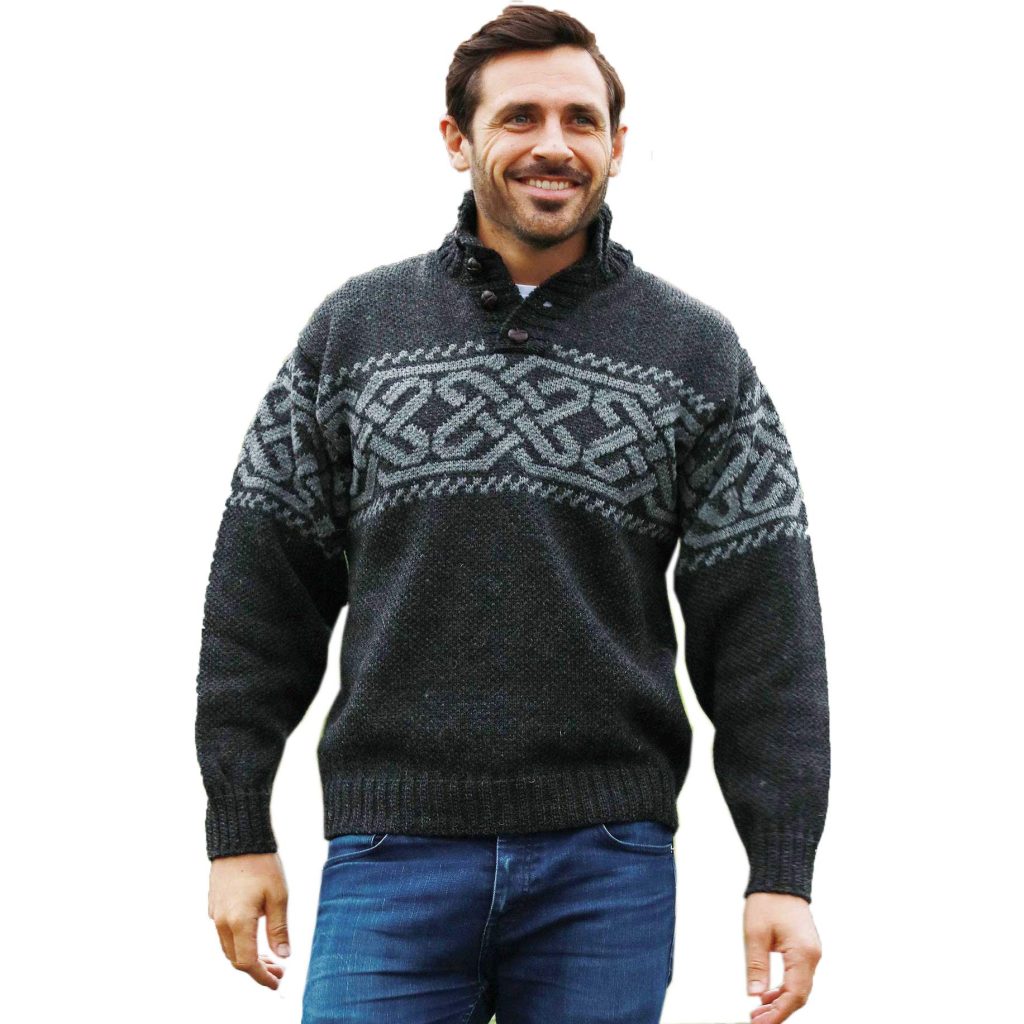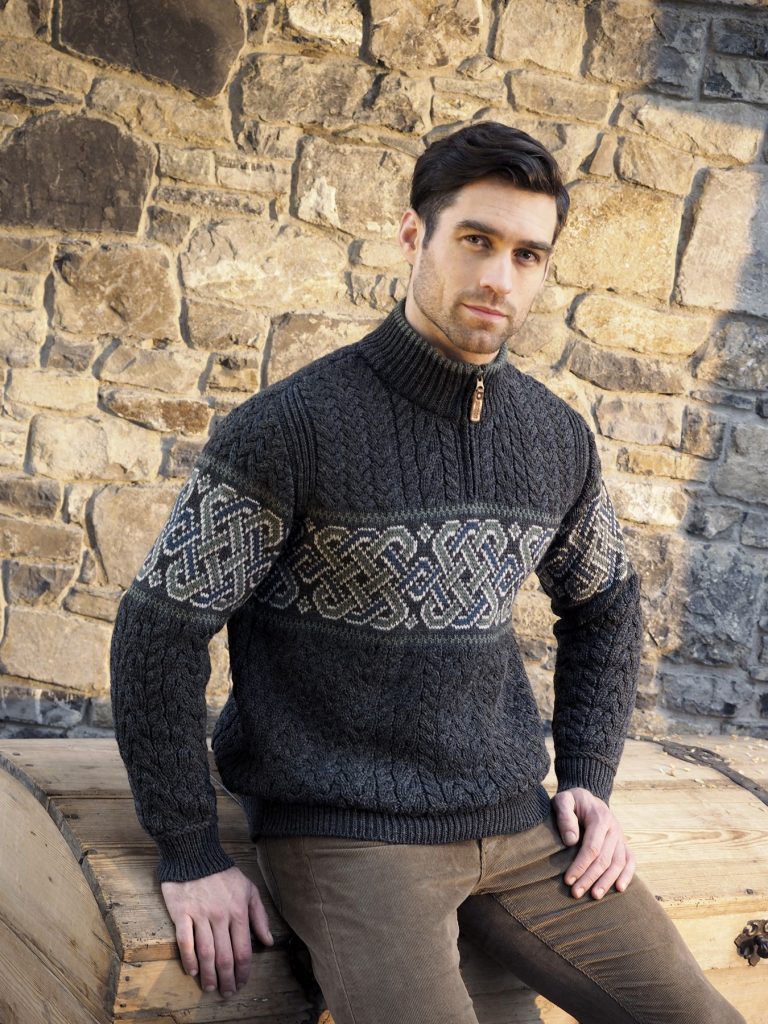Celtic sweaters, also known as Aran sweaters, are distinctive knitwear garments that originated from the Aran Islands off the west coast of Ireland. These iconic sweaters are renowned for their intricate patterns, rich symbolism, and high-quality craftsmanship. In this comprehensive guide, we will explore the key characteristics of Celtic sweaters that make them unique and popular among fashion enthusiasts worldwide.

1. Historical Significance:
- Celtic sweaters have a rich history rooted in Irish heritage and tradition. They were originally hand-knit by local fishermen’s wives to provide warmth and protection from the harsh Atlantic weather. The intricate stitches and patterns were believed to signify familial connections and offer good luck to the wearer.
2. Symbolism and Meaning:
- Celtic sweaters feature distinctive knit patterns that hold symbolic significance. Common motifs include:
- Cable Stitch: Represents the fisherman’s ropes and hopes for a fruitful catch.
- Diamond Stitch: Symbolizes the fields of the Aran Islands and a bountiful harvest.
- Honeycomb Stitch: Signifies hard work and the industrious nature of island life.
- Tree of Life Stitch: Represents growth, strength, and the interconnectedness of all living things.
3. Intricate Knitting Techniques:
- Celtic sweaters are characterized by intricate knitting techniques that create textured patterns and visual interest. Traditional Aran stitches require skill and precision, with each stitch holding its own symbolism and meaning.
4. Natural Materials:
- Authentic Celtic sweaters are typically made from natural fibers such as wool, merino wool, or cashmere. These materials provide warmth, durability, and a luxurious feel, making Celtic sweaters suitable for cold climates and outdoor activities.
5. Warmth and Insulation:
- Celtic sweaters are designed to provide excellent insulation and warmth, making them ideal for layering during chilly weather. The tight knit and quality wool fibers trap heat close to the body, ensuring comfort and coziness.
6. Durability and Longevity:
- Due to the high-quality materials and meticulous craftsmanship, Celtic sweaters are known for their durability and longevity. With proper care, these sweaters can last for many years, becoming cherished heirlooms passed down through generations.

7. Versatile Styling:
- Celtic sweaters are versatile garments that can be styled in various ways to suit different occasions. They pair well with jeans for a casual look or can be dressed up with tailored trousers for a more refined ensemble.
8. Handmade vs. Machine-made:
- While traditional Celtic sweaters were hand-knit, modern production methods may involve machine knitting. Handmade sweaters often exhibit slight variations and imperfections, adding to their charm and uniqueness.
9. Color Variations:
- Celtic sweaters traditionally feature natural, earthy tones such as cream, beige, gray, and brown. However, contemporary designs may incorporate a wider range of colors to appeal to diverse tastes and preferences.
How to choose celtic sweaters?
Choosing the perfect Celtic sweater can be an exciting and rewarding experience, given the rich history, intricate designs, and high-quality craftsmanship associated with these iconic garments. Whether you are looking to add a traditional Aran sweater to your wardrobe or seeking a contemporary twist on this classic knitwear, selecting the right Celtic sweater involves considering factors such as style preferences, fit, material, and authenticity.
1. Understanding Celtic Sweater Styles:
- Before making a purchase, familiarize yourself with the different styles of Celtic sweaters available. Traditional Aran sweaters feature cable, diamond, honeycomb, and other symbolic stitches, each with its own meanings and significance. Modern variations may incorporate these classic motifs in innovative ways or experiment with new design elements.

2. Identifying Your Preferences:
- Consider your style preferences and the intended purpose of the sweater. Are you looking for a timeless and classic design, or do you prefer a more contemporary interpretation of Celtic knitwear? Think about the colors, patterns, and overall aesthetic that appeal to you.
3. Selecting the Right Fit:
- When choosing a Celtic sweater, pay attention to the fit and silhouette to ensure comfort and flattering proportions. Decide whether you prefer a relaxed, oversized look or a more tailored fit. Check the sizing guide provided by the brand or retailer to select the appropriate size for your body type.
4. Quality Materials:
- Authentic Celtic sweaters are crafted from high-quality natural fibers such as wool, merino wool, or cashmere. These materials offer warmth, softness, and durability, ensuring that your sweater will stand the test of time. Check the product description to verify the composition of the yarn used in the sweater.
5. Authenticity and Craftsmanship:
- Look for Celtic sweaters that showcase meticulous craftsmanship and attention to detail. Hand-knit sweaters often exhibit unique characteristics and imperfections that add to their charm and authenticity. If purchasing a machine-made sweater, ensure that it maintains the essence of traditional Aran knitting techniques.
6. Checking for Symbolic Motifs:
- Explore the knit patterns and motifs featured on the sweater to understand their symbolism and meanings. Traditional Aran stitches carry cultural significance and historical roots, so selecting a sweater with motifs that resonate with you can enhance your connection to Celtic heritage.

7. Color Choices:
- Consider the color palette of the sweater and how it complements your existing wardrobe. Classic Celtic sweaters often feature neutral tones such as cream, beige, and gray, but contemporary designs may offer a wider range of colors to suit different preferences. Choose a color that reflects your personal style and versatility.
8. Versatility and Styling Options:
- Evaluate the versatility of the sweater and how it can be styled for various occasions. A versatile Celtic sweater can be paired with jeans for a casual look, layered over a shirt for a smart-casual ensemble, or accessorized with scarves and jewelry for added flair. Select a sweater that aligns with your lifestyle and wardrobe needs.
9. Budget Considerations:
- Determine your budget range for purchasing a Celtic sweater and explore options within that price range. While authentic hand-knit Aran sweaters may come at a higher price point due to the craftsmanship involved, there are also affordable machine-made versions available that capture the essence of Celtic knitwear.
Celtic sweaters embody a unique blend of artistry, tradition, and functionality, making them cherished wardrobe staples with a rich cultural heritage. Whether worn for their symbolic meanings, intricate designs, or cozy warmth, Celtic sweaters hold a special place in the world of knitwear fashion and continue to captivate enthusiasts with their timeless appeal.
